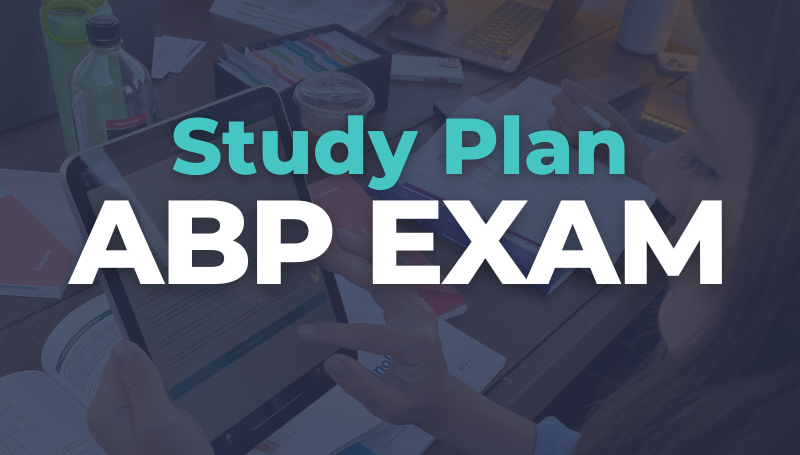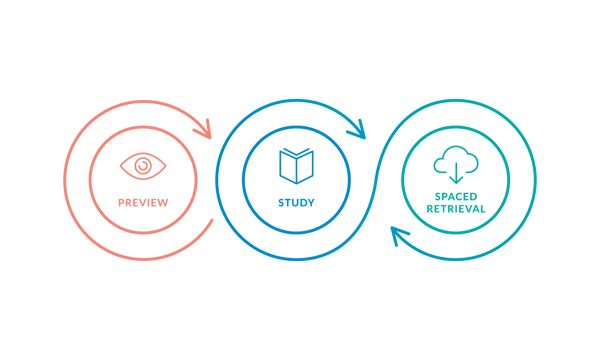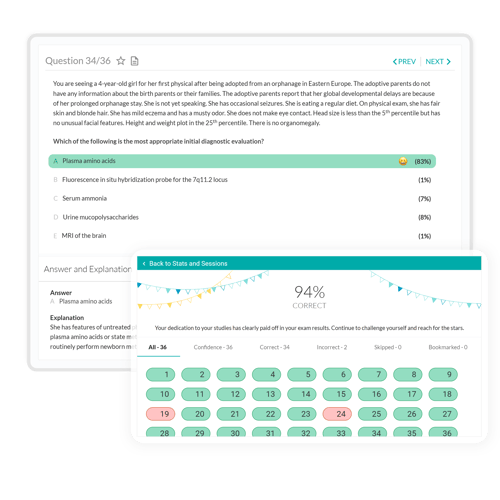How to Study for Pediatric Board Exams in 6 Months

Whether you're taking the certification exam or recertification exam, creating a study plan for your Pediatrics exam is crucial to being efficient while covering all the material you need to know. Your study "game plan" is your key to success—how you set it up matters! Science has proven that there are specific learning truths (as outlined in the StudyWise Guide) that unlock your brain to be more efficient while you study, and anchor the concepts you're studying in your long-term memory.
We'll be honest with you—preparing for the boards in 6 months will be tough. It's crucial to set up your study schedule to maximize your efficiency. Whether you've already started on the material or you're just getting ready to dive in, this Complete 6-Month Pediatrics Board Study Plan will narrow your scope and make you more efficient.
Month 1: Choose your learning tools
The tools you use to study for Pediatric Board Exams should match your needs, as well as your preferences. Whether you study best with books, a review course, or using a video board review, make sure that your main study tool is comprehensive and fully covers the American Board of Pediatrics content outline.
Some docs make the mistake of solely using questions to prepare for the exam. While answering board-style questions might seem like the most efficient test prep strategy, it really doesn't work that way. Q&A banks are best used as a tool for recalling information you already know very well. Start doing Q&As in the months or weeks before your Pediatric Board Exam—once you've done your comprehensive review of all the material—to get your brain prepared for how the concepts will present in the exam environment.
To optimize study time, use study materials that are focused as much as possible on your goal. This can be difficult to find because learning material is often produced with more than one goal in mind. MedStudy learning tools are 100% focused on the medical knowledge you need to know to be a competent pediatrician—exactly what the boards test for. Our physician contributors are dedicated specialty and subspecialty teachers who take the board blueprints, many years of user feedback, and their own experience (teaching, writing board questions, etc.) to hash out between them what is expected of a competent pediatrician and use only that material as MedStudy content.
Pro Tip: Integrate multiple study tools into your board study plan
Reviewing a concept from different angles (e.g. in different formats) deepens your understanding and memory of that concept. We integrate this science-backed truth into all of our learning tools so that you can approach must-know concepts in multiple ways: fun, live lectures; crisp, conversational text in the Core; Qbank+ questions that force you to compare and contrast; Flashcards that present the concept as a story; and flexible audio review.
"I love MedStudy as a study tool. It is short (and to-the-point), but complete review of the material. It was a tough test but I think, if I decide to take the test in 10 yrs once again, MedStudy will again be my choice of study material." —Kimberly Eddings-Reece, MD
Month 1: Understand how to study for pediatric board exams
Years ago, our Editor-In-Chief, Robert A. (Tony) Hannaman, MD started a quest to determine the best way to transfer all the required medical knowledge into long-term memory so it would be durable and easily accessible. He dove into the latest brain science on how memories are made and the best evidence-based learning techniques, and distilled it into a universal study approach: The MedStudy Method.
It's all in StudyWise—our free, quick-read guide that breaks down the best way to study medicine for immediate recall and retention. We break your study plan down into 3 simple steps, and show you how to do it with each of our learning tools.
Here's the basics: the 3 steps are Preview, Study, and Spaced Retrieval. There are very specific techniques used in each phase. This PSSR approach is an optimization of the way we naturally learn and works with any study material. PSSR is foundational to studying for your Pediatric Board Exam.
Preview
Relax and see what you can remember. At this stage, you’re only getting ready to study—this is a low-stress exercise in which you simply look at the topics and attempt to recall everything you know about them; you’re not trying to learn new information. Because this is a preview exercise, you do not seek the answers. You only go over the questions and you only see what you can dredge up with a little pondering (i.e., effortful recall).
Study
This is where you actually study the material in a textbook, attend a lecture, or watch the video. Seek understanding, but know that you are not supposed to know the material already nor are you supposed to know it at the end of this study period. During this phase, you are satisfying your curiosity and simply aiming for an understanding of the facts, concepts, and processes.
Spaced Retrieval
Okay, now we get serious about moving the study unit material into long-term memory. After you first study any particular section, mark a date in your calendar to do Q&As on that same section, at progressively longer intervals. For example, use the table of contents to mark the date 2 days, 10 days, and 6 weeks later to review the Q&As for that section. Now you're doing spaced retrieval!

The PSSR method is essential to studying for Pediatric Board Exams.
Months 1–5: Implement your study plan
Take the Table of Contents from your comprehensive study resource—if you're using MedStudy, that would be our Core, Video Board Review, or a Review Course—and use the topics listed within the TOC to understand how to 'chunk' the topics you're studying.
Some docs like to write down dates in the TOC for each of the steps: your "Preview" date will be listed in one color, your "Review" date listed in a different color, and the multiple "Retrieve" dates in yet a different color.
Preview each topic the day before you are going to study it. For example, in the Core you can use the Preview | Review questions to dredge up all the info you can remember on that topic. This will help make your brain "sticky" when you're doing a comprehensive review of that concept tomorrow. After you've completed the comprehensive review, set a reminder to go in 2 days, 10 days, then 6 weeks later to do Q&As for that same topics. This spaced retrieval of the concepts will lock the info into your long-term memory.
Months 5 & 6: Study board-style Q&As exclusively
During the 3–4 weeks before the boards, do nothing but answer Q&As. And remember to practice recall incessantly with every phase of study and while you work! With Q&As, recall as much as you can about the topic before you look at the answer. Make sure you know why the correct answer is correct and why each distractor is incorrect before you move on to the next question. If you are not sure, look it up or review that section in the Core.
Month 6: The week before your exam day
In the final week, try to relax. Don't cram! There are a few strategies that can help you prep this week.
Month 6: On exam day
On the day of your exam, keep your normal daily routine in place. Make sure you're comfortable and your mind is in a positive place. Our favorite exam day advice? Call a loved one before starting your exam for a positive pep talk. You've got this!
To go several steps deeper on learning science and how to effectively study, check out StudyWise.



